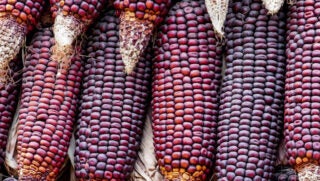Did you know? After reproductive failure, sow lameness is the second reason sows are culled from herds. An average of 30-35 percent of sows in any given herd experience lameness.
Producers should target that number to be just 10 percent of their herd.
Early culling of sows also cuts into profits. This is due to potentially decreased farrowing rate, smaller litters and limited progeny performance, which are all traits linked to early parity sows.
“We know that a sow must reach her fourth parity to realize her economic potential,” said Mike Hemann, swine account manager at Zinpro Corporation. “By working to decrease lameness in the sow herd, we can increase the longevity in sows and, in turn, can see more sows reach their economic potential.”
One indicator of good sow performance is low somatic cell counts. Trials at Zinpro Corporation have concluded that sows fed the proper amounts of copper, zinc and manganese trace minerals experience lower somatic cell counts. Hemann notes, “this is tied directly to the white blood cell count in the sows. They have less inflammation and are overall healthier. This can lead to improved performance in both the sows and pigs.”
Recognize foot challenges
Several kinds of lesions can impact the health of a sow. Watch for these foot lesions in your herd:
- Toes slightly longer than normal can eventually impact sow gait when walking.
- Improper dew claws can be slightly longer than normal and can even extend to the floor surface when the pig is standing. They can also be torn or completely missing.
- Sows experience heel overgrowth and erosion when there are cracks and overgrowth and/or erosion in the soft heel tissue.
- Heel-sole crack occurs when there is a separation at the juncture of the heel and sole.
- White line is visible when a separation occurs along the white line of the foot.
- Horizontal wall cracks are evident when a hemorrhage is visible and when there is a horizontal crack in the claw wall.
- Vertical wall cracks occur when there is a vertical crack evident on the claw.
Many of these foot lesions can be caused by a nutritional deficiency or imbalance and can help be prevented by properly feeding the correct amounts of the trace minerals most needed by sows- copper, zinc and manganese. The use of these minerals at the right levels helps to optimize lifetime herd reproductive performance.
Swine producers, veterinarians and nutritionists can learn more about sow nutritional needs by visiting the Feeding for 30 Program.


